The Charm of Melodic Pet Birds: A Comprehensive Guide
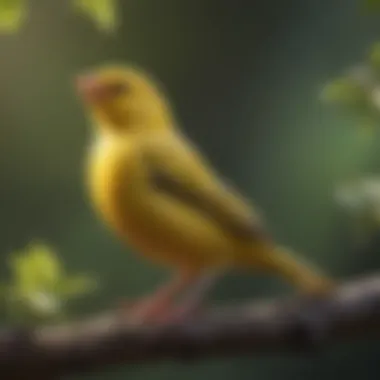
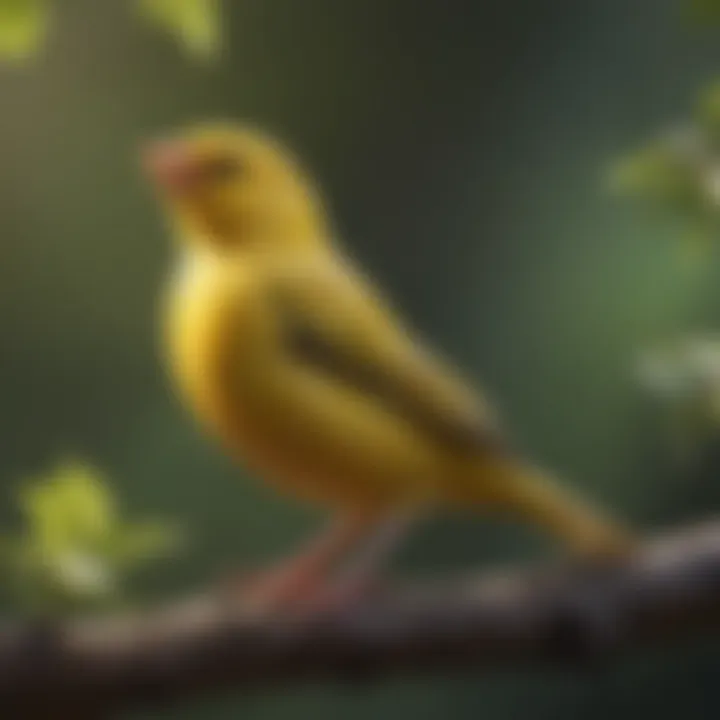
Intro
Pet birds have an undeniable charm; their songs echo through homes, creating an atmosphere that feels both lively and soothing. These delightful creatures, often more than mere pets, offer companionship and rich emotional experiences. Many bird owners find themselves enchanted by the melodic warbles and chirps of their feathered friends. Whether it's the intricate tunes of a canary or the playful chatter of a parakeet, these vocalizations can turn an ordinary day into something extraordinary.
But there’s more than just beauty in their songs. The vocal abilities of pet birds can be tied closely to their health, happiness, and the environment they live in. Choosing the right species of bird requires an understanding of each one's unique musical qualities and social needs. Thus, nurturing these songbirds goes beyond just providing food and shelter; it involves understanding their specific behaviors, ensuring they’re emotionally fulfilled, and creating a stimulating environment that promotes their natural singing instincts.
In this guide, we seek to explore key elements involved in caring for these melodious companions, focusing on how to establish an enriching habitat that encourages vocalization and well-being. The ultimate goal is to help bird owners cultivate a harmonious relationship with their pets while reveling in the joy their songs bring.
Preamble to Pet Birds and Their Songs
The enchanting world of pet birds seldom fails to capture the hearts of those who set their eyes upon these feathered wonders. Their songs, which can range from sweet melodies to complex imitations, serve as a major attraction. Understanding why these birds sing and the role their vocalizations play in their lives is paramount for any bird enthusiast. This section will delve into the significance of birds and their songs, highlighting not only the enjoyment they bring but also the broader implications for bird welfare and human interaction.
Understanding the Appeal of Birdsong
Birdsong has an intrinsic appeal that resonates with many, making it more than just noise. In various cultures, the melodious chirps and whistles of birds often symbolize freedom, joy, and the beauty of nature.
For pet owners, the allure of birdsong is multifaceted:
- Therapeutic Qualities: Studies have shown that listening to birds can reduce stress and anxiety levels. The soft, rhythmic sound can create a calming atmosphere.
- A Connection to Nature: Even in urban settings, birds allow individuals to experience a slice of nature in their homes. This connection can evoke a sense of peace and nostalgia.
- Personal Interaction: Birds can forge a unique bond with their human caretakers through song. A bird's singing can lead to playful interactions, enhancing the emotional connection between pet and owner.
People often find themselves immersed in a world where the stressors of daily life fade away in exchange for the vibrant songs of their feathered companions.
The Connection Between Birds and Humans
The relationship between birds and humans has a rich history. Not long ago, people revered birds not only for their beauty but also for their capacities as companions. This bond is where the beauty of pet birds truly shines. The ability to interact with others—both human and avian—breeds a sense of community.
- Cultural Significance: Birds have long represented various aspects of human emotion and experience in literature, art, and folklore. From the symbolic canary in coal mines to the majestic eagle representing freedom, birds have inspired countless stories.
- Emotional Companionship: Many pet owners find their singing counterparts are not just pets, but rather companions that offer solace through their tunes. In moments of solitude, the sound of a singing bird can provide comfort like no other.
- Educational Opportunities: Owning a pet bird can also serve an educational purpose. Observing their behaviors, interactions, and songs can be fascinating for families, especially children, as they learn about responsibility and the natural world.
By comprehending these dimensions of the human-bird connection, pet owners can foster a relationship that nurtures both the pet's well-being and their own joy.
"In selecting a pet bird, one doesn’t just choose a creature; they invite harmony into their lives."
In summary, the beauty of pet birds and their songs extends beyond mere aesthetic pleasure. It touches on deeper themes of companionship, emotional well-being, and a connection to the natural world, laying the groundwork for a rich and harmonious experience between humans and their feathered friends.
Popular Pet Bird Species with Notable Songs
The world of pet birds is diverse, teeming with species that not only capture our hearts but also fill our homes with enchanting melodies. Understanding the significance of these songbirds in this article serves a dual purpose: it highlights the beauty of their songs and emphasizes the joy they bring into our lives. Knowing more about popular songbird species can enhance a potential owner's choice and foster a rewarding companionship. With considerations like vocal ability, personality, and care requirements, pet lovers can make informed decisions about the avian companions they invite into their homes.
Canaries: The Classic Songsters
Canaries are often at the top of any bird lover's list. These small, vibrant birds are not just visually appealing but also recognized for their sweet songs. The first note to strike is the history—canaries originated from the Canary Islands, and they have been bred for centuries for their vocal talents. Interestingly, there are different breeds, each with unique singing characteristics. For instance, the American Singer, known for its melodic tunes, tends to have a richer song than other breeds.
A well-cared-for canary can be a true joy, often singing throughout the day, providing a lovely backdrop to daily life.
Their singing is influenced by various factors, such as lighting and social interaction. As a bird owner, one should provide a comfortable cage with ample perches and toys to keep these lively creatures entertained. The joy of a singing canary is not just a bonus; it can brighten up any dull day.
Finches: Variety in Melody
Finches bring a delightful diversity to avian music. Unlike canaries that are often bred for specific song styles, finches display a vast range of melodies across different species. For example, the Zebra Finch has a charming trill, while the Society Finch is known for its soft and delicate notes. Their songs vary, reflecting their distinct backgrounds and characteristics.
In many cases, finches are considered more social beings and thrive in small flocks. This social nature not only influences their vocalizations but also their overall well-being. Keeping a few finches together can result in the emergence of beautiful harmonies, providing a living soundtrack for any occasion.
Parrots: The Mimicry Masters
If there's one thing that stands out about parrots, it's their remarkable ability to mimic sounds. Unparalleled in the bird world, their vocal talents can lead to entertaining imitations of human speech and even environmental noises. Budgerigars, or budgies, enjoy a reputation as charming conversationalists. Their ability to learn words and phrases can turn these little companions into engaging members of the family.
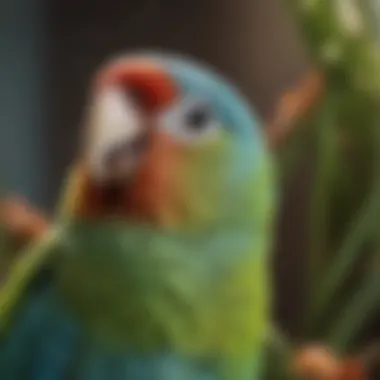
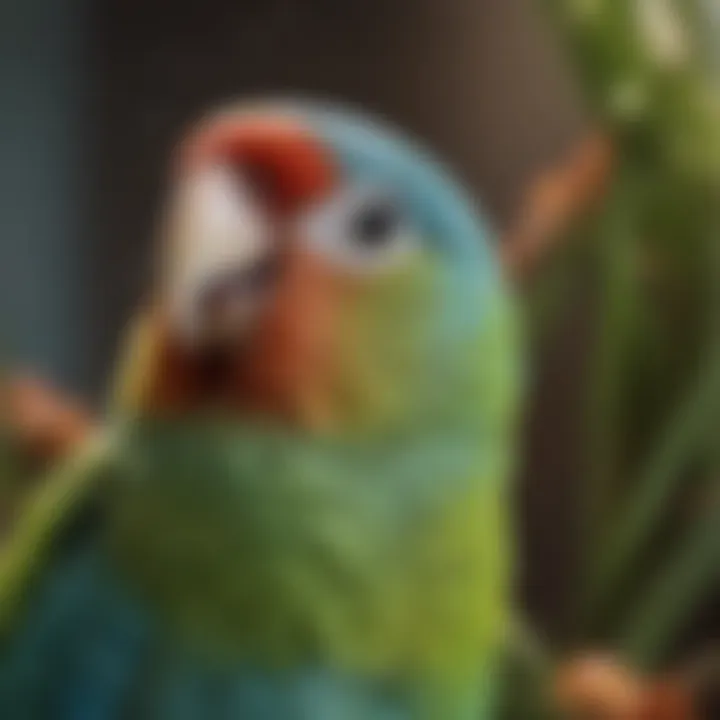
However, it's essential to remember that parrots require more than just basic care. Their intelligence and social needs mean that interaction is paramount. A parrot that feels socially neglected might become less vocal, losing its impressive speaking abilities.
Mockingbirds: Nature's Vocal Performers
Mockingbirds, infamous for their incredible repertoire, are often the artists of the avian world. Known to mimic other bird species, household sounds, and even human voices, they create a rich tapestry of melodies that can enthrall anyone lucky enough to hear them. They are often seen in nature, showcasing their vocal prowess, especially during the breeding season.
Their extensive singing habits create a unique ambiance, making them suitable for those who appreciate a lively environment. However, it’s important to note that mockingbirds are often wild, and keeping them in captivity requires careful consideration of both legality and well-being.
The Science Behind Birdsong
Birdsong isn’t just a pleasant backdrop to a sunny morning; it’s a complex phenomenon rooted in the very makeup of a bird's biology and environment. Understanding the science behind it provides pet bird owners and aspiring bird parents valuable insights into how to support and nurture their feathered companions. This section dives into two primary aspects of how birds learn to sing and the implications of genetics and environment on their vocalizations.
How Birds Learn to Sing
Learning to sing is no small feat for birds. Unlike us humans who can just belt out a tune, birds have a methodical approach to developing their songs. Young birds typically undergo a two-phase learning process:
- Listening Phase: In this initial stage, young birds pay close attention to the songs performed by adult birds in their vicinity. Mimicry is key here; they often try to imitate the sounds they hear.
- Practice and Refinement Phase: As they grow, these fledglings begin to practice their own renditions, often modifying what they’ve learned from their mentors. This phase can resemble a singer hitting the rehearsal studio, working tirelessly to perfect their melody.
Throughout this practic period, birds also rely on social interactions to refine their singing. Group dynamics can encourage birds to compete in melodic prowess, prompting them to develop a unique signature call within their social context. For many birds, this ability not only plays a role in attracting mates but also serves as a tool for establishing territory.
The Role of Genetics and Environment
Both genetics and environmental factors come into play when it comes to a bird's musical talent. Just like humans have differing vocal ranges and styles due to family traits, certain bird species are genetically predisposed to specific sounds and chirps. Here, the documentation of behavioral genetics sheds light on how lineage can impact singing abilities:
- Genetic Predispositions: Specific genes influence vocal learning capabilities. For example, some parrots have exceptionally high vocal mimicry capability thanks to their genetics.
- Environmental Influences: If a bird is raised in a secluded environment devoid of song influence, it might struggle to mature its own vocal repertoire. A lush habitat bustling with diverse sounds enriches a bird's learning experience.
In summary, while genetics lay the foundational framework for a bird's singing potential, the environment shapes how this potential is expressed. Pet bird enthusiasts can apply this knowledge by ensuring their feathered friends have access to a rich, stimulating habitat where they can both learn from and interact with other birds or sounds, leading to healthier and more vibrant vocalizations.
Creating an Ideal Environment for Songbirds
An inviting and well-structured environment forms the backbone of a happy and melodious pet bird’s life. Birds, by nature, are creatures that thrive in dynamic spaces where they can express themselves fully. A thoughtfully curated environment not only encourages song but also plays a vital role in the overall well-being of these feathered companions. Proper setups lead to healthy vocalizations, creating a harmonious atmosphere for both bird and owner.
Habitat Setup: Cage Size and Accessories
Choosing the right cage is akin to selecting a home for singin' songbirds. Cage size matters more than most pet owners realize. A cramped cage can stifle movement and inhibit vocal expression. Birds need ample space to spread their wings—literally and metaphorically. A spacious aviary can inspire beautiful melodies and cheerful chirps, while a smaller cage may lead to stress and frustration.
When selecting the size, aim for something at least two times the wingspan of the bird perched comfortably. Accessories deserve equal attention. Playgyms, swings, and perches of varying heights and textures keep things exciting. Thoughtfully arranged play areas stimulate exploration and interaction. To make the cage feel more like home, consider adding toys that encourage mental stimulation. Natural wood perches step up the game—these encourage birds to dance around and sing away!
Lighting and Temperature Considerations
Birds are sensitive to their surroundings, and lighting can dramatically affect their mood and motivation to sing. Aim for natural lighting—you want your avian friends to soak in the sun like a beachgoer at their favorite shore. Daily exposure to sunlight, as well as a consistent day-night cycle, are essential for their health. If natural light isn't available, opt for bird-safe full-spectrum bulbs to mimic the sun’s nurturing rays. Also, consider providing shaded areas within the cage where your bird can find respite.
Temperature, likewise, is key. Birds prefer a slightly warmer environment, usually between 70°F to 80°F. Sudden changes in temperature can lead to stress, which is bad for song. Keeping their habitat away from direct drafts or hot spots ensures comfort, making it easier for them to belt their tunes.
Introducing Natural Elements: Plants and Perches
Natural elements create a more authentic habitat. Incorporating bird-safe plants not only beautifies the space but also replicates their natural environment. Green foliage can enhance a bird's mood, leading to increased chirping. Ferns and spider plants are popular choices—these little greenery friends love to hang out and look great too!
Perches should imitate their natural habitat as well. Choose varied sizes and textures that let the birds grip and exercise their toes. By allowing them to climb and explore different surfaces, you encourage them to engage—not all perches need to be wooden; some cozy rope perches can add character.
In essence, crafting an ideal environment is about more than aesthetics; it encompasses comfort, stimulation, and the ability to flourish. Your songbird needs a space that inspires their voice to soar. Taking time to get these details right will lead to a superlative setup that nurtures melodious talents and a strong bond between bird and owner.
Investing in a well-designed environment not only enhances the bird’s quality of life but also ensures their songs continue to fill your home with joy.
Feed and Nutrition for Vocalization
Feeding pet birds isn't just a chore; it's an art that can have a profound effect on their health and singing abilities. The nutritional choices you make can either enhance the beauty of their songs or, conversely, lead to vocal issues. This segment navigates through the intricate relationship between a bird's diet and their melodious outputs. To truly appreciate the vibrant songs of your feathered friend, it's essential to focus on what goes into their beaks.


The Impact of Diet on Birdsong
Diet plays a crucial role in a bird's overall health and well-being, laying the groundwork for their vocal abilities. A well-rounded diet contributes not only to physical health but also to vocal quality. It's a bit like a musician preparing for a concert; the right nutrition can be the difference between a flawless performance and a cacophony.
Birds require a balanced mix of seeds, fruits, vegetables, and specialized pellets that cater to their species-specific needs. For example, finches thrive on a diverse diet that includes small seeds and greens, while parrots benefit from a blend of nuts, seeds, and fresh produce.
"Feeding isn’t just putting food in a bowl; it’s fueling the song and soul of your bird."
Moreover, the timing of feedings also matters. Scheduled feedings can harmonize better with their natural behaviors, encouraging them to sing at expected times. This routine aids not only in vocalization but contributes to their overall happiness.
Essential Nutrients for Healthy Vocal Cords
To ensure that your pet bird can belt out those beautiful tunes, certain nutrients are indispensable. Just like athletes rely on certain foods to enhance performance, birds too require a steady intake of specific elements for optimal vocal health.
- Amino Acids: Proteins are the building blocks of life. Amino acids contribute to the health of the vocal cords, ensuring they function properly. For instance, methionine and cysteine are crucial for maintaining the integrity of tissues in the larynx.
- Vitamins: Vitamins A, E, and the B-complex family are of paramount importance. Vitamin A helps maintain healthy mucous membranes that coat the vocal cords, while Vitamin E supports tissue healing.
- Fatty Acids: Omega-3 and omega-6 fatty acids foster overall cell health, which includes participation in vocal cord vibration.
- Minerals: Calcium and magnesium are not just vital for bone health; they also assist in muscle function, including the tiny muscles around the vocal cords.
To wrap it up, bird owners should aim to provide a diverse fare. Leafy greens, soft fruits, and specially formulated bird pellets that contain these nutrients will keep those vocal cords in peak form, ready for a daily concert of delightful melodies.
The Importance of Social Interaction
Social interaction plays a pivotal role in the lives of pet birds, akin to a lifeline that connects them to their human companions. It's not merely about feeding or cleaning their living space; it's about engaging in a relational dance that enriches their existence and elevates their well-being. A well-socialized bird tends to exhibit more vibrant health and, notably, happier dispositions. A lack of interaction, on the other hand, can lead to stress and behavioral issues, making socialization not just beneficial but essential.
Birds are inherently social creatures. Many species, like parakeets and cockatiels, thrive in groups in the wild, so solitary confinement can be particularly vexing for them. The absence of companionship often leads to loneliness, which can stunt their vocalization abilities. Simply put, a songbird that feels isolated may decide to keep its melodious gifts to itself, while a socialized bird may sing freely and exuberantly. This dynamic underscores the importance of spending quality time with pet birds to encourage their natural tendencies to sing and communicate.
Bonding Through Communication
When it comes to bonding, communication is the first step. Engaging in vocal exchanges with your pet bird can foster a stronger connection. Birds often mimic sounds, not just because they can, but to interact with their human friends. Responding to their chirps or whistles can create a rhythm of back-and-forth conversation, deepening your bond.
Birds are notably responsive to tone and pitch. For instance, softly whistling back at a Canary may elicit joyous trills in response. Think of it like a call-and-response session at a singalong! Every interaction builds trust, encouraging your bird to express itself more vocally.
Enrichment Activities that Promote Singing
Creating an environment that encourages vocalization involves more than just interaction but also includes a variety of enrichment activities. These can ignite a bird’s innate desire to sing, transforming a quiet pet into a melodious companion. Here are some ideas to consider:
- Toys That Make Noise: Interactive toys that make sounds can stimulate your bird's curiosity and prompt it to respond in song.
- Musical Time: Playing music or singing around your bird can encourage it to join in and learn new tunes. Auditory stimulation often brings out a bird’s vocal talents.
- Social Playdates: If your bird is compatible with others, arranging playdates with fellow pet birds can lead to a chorus of songs.
"The melody of a happy bird is often a reflection of its environment and relationships."
Through engaging communication and enriching activities, pet bird owners have the ability to nurture their companions into joyful, expressive songsters.
Health Considerations for Singing Birds
Maintaining the health of singing birds is pivotal not only for their vocal prowess but also for their overall well-being. Just like a canary's song can lift one's spirits, a healthy bird brings joy both to itself and to its human companions. Attention to health can make a significant difference in how often and how beautifully your pet sings.
Identifying Signs of Distress in Vocalization
Birds communicate through various forms of vocalization, and understanding these nuances is essential for any bird owner. A noticeable change in a bird’s song can signal underlying issues. Here are some common signs to look for:
- Altered Vocal Patterns: If your bird's singing suddenly becomes erratic—singing less frequently or exhibiting unusual sounds—this may indicate distress or illness.
- Changes in Volume: A noticeable drop in volume can imply that your pet is unwell. Birds often instinctively lower their volume when they feel threatened or poorly.
- Behavioral Changes: If your songbird seems withdrawn, stops preening, or exhibits repetitive feather plucking, these behaviors often correlate with changes in vocalizations.
Monitoring these signs requires a keen eye and ear. It’s beneficial for owners to maintain a regular schedule of observation, ensuring that any unusual behaviors are noted early.
"A happy bird sings without restraint; when something lurks beneath, silence speaks louder than song."
Regular Veterinary Check-Ups: A Preventive Approach
Just as humans benefit from regular health check-ups, songbirds also require consistent veterinary attention. In fact, preventive care is essential in ensuring your feathered friend remains in top form. Here’s why regular vet visits matter:
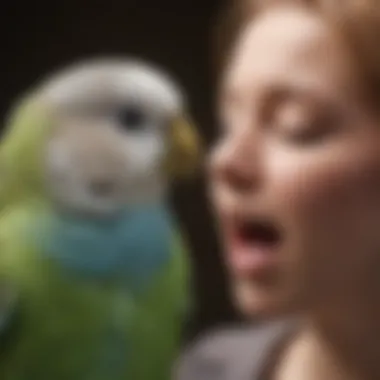
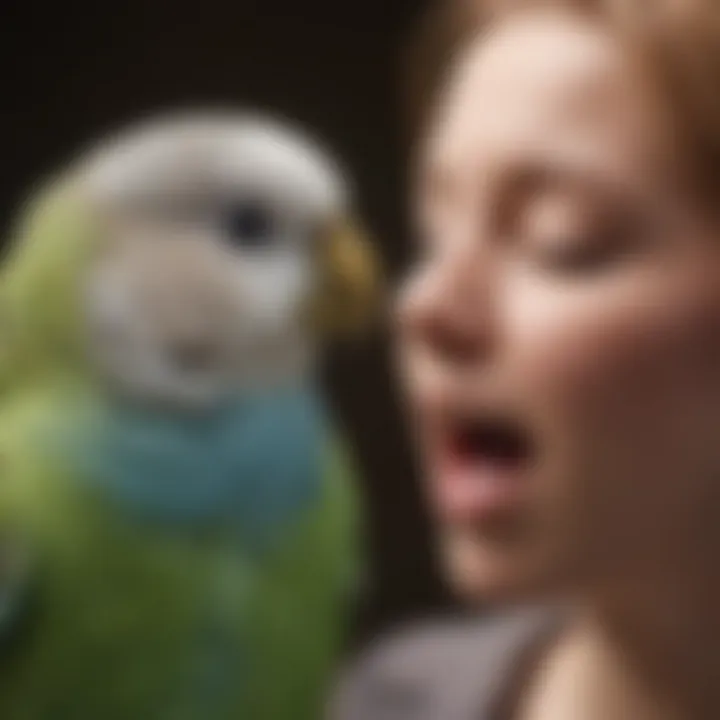
- Early Detection of Illness: Many illnesses may not show immediate symptoms. A routine examination can catch these problems before they escalate.
- Health Records Tracking: Keeping a historical record of your bird’s health allows the veterinarian to recognize patterns—this could help in identifying any underlying health issues.
- Vaccination Updates: Your vet can also update essential vaccinations, helping to fend off diseases that can impair vocal abilities.
A simple trip to the vet every six months can save you trouble down the road. Not only does it assure the health of your pet bird, but it also contributes to the joy of having a song-filled home.
Understanding Song Variability and Preference
Birdsong carries a mesmerizing quality, reflecting the intricate nuances of avian life and fascinating patterns of behavior. Understanding the variability in how different birds sing is crucial for any bird enthusiast or pet owner. The richness of their melodies not only expresses their personalities but also offers essential clues to their emotional and physical well-being.
Each bird species has its unique singing style, influenced by genetic makeup and environmental factors. This modulates how they communicate and establish their territory. For instance, the enchanting canary is known for its sweet, melodic tunes that vary greatly from the sharp, quick chirps of finches. Recognizing these individual differences can help owners respond better to their pets, fostering a deft connection that enhances both the owner's and the bird's experience.
Understanding song variability also sheds light on the behavioral needs of pet birds. Birds that sing enthusiastically are often those that feel secure and properly cared for. On the flip side, a bird whose vocalizations have diminished might be signaling distress or health issues. Therefore, listening closely to a pet bird’s songs is like having a window into their world—void of jargon but rich with meaning.
Moreover, the benefits extend beyond simply ensuring well-being. A pet bird that feels motivated to sing contributes to a vibrant household atmosphere. Here are some considerations:
- Creating a Comfortable Space: A bird that is content in its environment is more likely to showcase its vocal gifts. This can involve providing engaging toys, appropriate lighting, and social interaction.
- Encouraging Natural Behavior: Mimicking the natural calls of local birds can trigger an instinctual desire to sing, leading to a more fulfilling life for pet birds.
- Monitoring for Changes: If a bird stops singing or its song changes dramatically, it might be a sign of stress, illness, or environmental factors that need addressing.
Listening to the subtle shifts in your bird's song can guide you in nurturing their happiness, ensuring a harmonious home where both the pet and the owner thrive.
Individual Differences in Singing Styles
Within the avian realm, each bird possesses its individuality, especially depicted through song. Not just a sonic reproduction, these differences are often shaped by varied influences—ranging from inherited traits to personal surroundings.
Take, for example, the delightful African Grey Parrots. Renowned for their impressive mimicry, these birds often replicate the sounds they hear around them. A well-socialized African Grey might belt out entertaining impressions of their owners or even household noises, reflecting the richness of their environment. In contrast, a cockatiel may develop a distinctly different melody, influenced by its preference to whistle rather than mimic.
Recognizing an individual bird’s singing style can aid in tailoring care and interaction practices. Engaging in vocal exchanges with the bird can seamlessly encourage its unique repertoire.
Seasonal Changes in Birdsong
Birdsong can transform with the seasons, almost like a symphony that ebbs and flows according to environmental cues. For many species, this variation is marked by breeding cycles, daylight changes, and even temperature variations.
During spring, for example, the dawn chorus bursts into life as male birds perform to impress potential mates. Their songs become more elaborate, reflecting increased vitality and competitiveness. As the seasons wane towards winter, however, melodies can grow quieter or change altogether as birds conserve energy or prepare for migration.
Pet bird owners should tune into these seasonal shifts. A drop in song activity during colder months might not necessarily indicate distress; it could simply reflect changing natural rhythms. On the other hand, if a bird begins to sing more frequently during the spring, it could be a sign of its instinctual drive to attract attention or reinforce territory.
Understanding these patterns equips pet owners with the knowledge to adapt care practices accordingly. Changes in the bird's environment, including temperature and light exposure, might need to be adjusted to align with its natural instincts. Monitoring these variations not only ensures the bird's well-being but also enriches the owner-bird relationship.
Culmination: Nurturing a Harmonious Relationship with Songbirds
Building a strong connection with our feathered friends is vital for both the birds’ well-being and the enjoyment of their company. Understanding the unique needs of songbirds paves the way for a fulfilling relationship that resonates through beautiful melodies. The essence of nurturing such a bond lies in consistent care, active engagement, and a commitment to lifelong learning regarding avian health and behavior.
When pet owners take the time to learn about their bird's needs, preferences, and singing habits, they lay the groundwork for a harmonious living environment. Listening to their songs and observing their behavior can become a rewarding experience. It’s crucial for caregivers to recognize that this relationship goes beyond mere companionship; it involves a responsibility that ensures the bird's physical and emotional health.
"A songbird that sings is a happy bird."
Understanding how to foster such happiness might include maintaining a balanced diet, providing social interaction, and creating an environment that mimics their natural habitat. With every chirp, the bond deepens, and both bird and owner can thrive.
Emphasizing Lifelong Learning in Avian Care
The journey of caring for a songbird doesn’t end once the cage is set up or the food and water are provided. Lifelong learning plays a significant role. The bird's songs and behaviors can change with age, health, and social dynamics. Regularly updating one's knowledge about avian care and behavior can improve both care tactics and the quality of interaction.
Pet owners might find it helpful to:
- Join bird clubs and forums, such as those on Reddit, where ideas and personal experiences can be shared among fellow bird enthusiasts.
- Attend workshops or webinars focusing on avian health, bird singing, and behavior.
- Read literature and research from reputable sources such as Wikipedia or Britannica to stay informed about new findings in bird care and welfare.
Investing in knowledge not only benefits the bird but also enhances the owner’s ability to create a more fulfilling environment, filled with comfort and security.
Fostering a Songbird-Friendly Community
Creating a welcoming atmosphere extends beyond individual households and fosters a community of bird lovers. This is essential in promoting a supportive environment where new pet owners can gain insights and existing owners can share their experiences.
Engaging in local events like bird shows, or join community groups on Facebook aimed at avian care can help expand connections with others who share the passion. Here are some ways to cultivate a workable community:
- Organize swap meets for bird supplies, food, or even songbirds themselves, allowing bird lovers to share resources.
- Host regular meetups to discuss care tips or showcase pets. This could be something informal, like a potluck, where everyone can bring their birds and share stories.
- Encourage local pet stores or vet clinics to sponsor events that educate the public on caring for songbirds.
- Utilize online platforms to create informative content or discussion groups to keep the dialogue going.
Such community actions feed into the heart of avian care, linking knowledge with shared experiences, resulting in a collective commitment to nurturing our songbirds. Whether through casual conversations or organized events, the spirit of cooperation can spread far and wide, benefiting not only individual birds but also the greater community of bird lovers.















